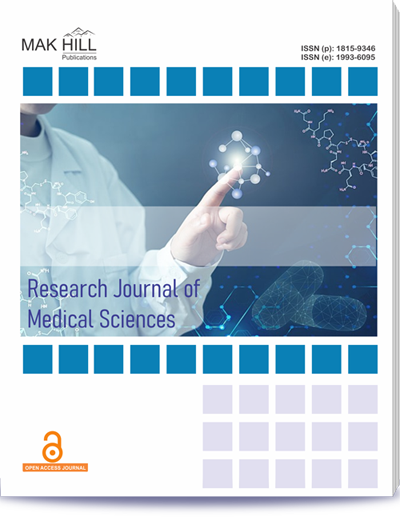
Research Journal of Medical Sciences
ISSN: Online 1993-6095ISSN: Print 1815-9346
Abstract
A post – operative bilateral permanent Recurrent Laryngeal Nerve (RLN) Palsy is a surgical tragedy. It is an iatrogenic horror comparable to a surgically induced facial nerve paralysis and possibly more incapacitating and embarrassing than the loss of a lower limb. Further more such a disaster is more than likely to be followed by the misery of litigation. Unfortunately thyroidectomy continues to produce a high rate of complications and damage to the recurrent laryngeal nerve is occasionally an inevitable complication of thyroid surgery. It may be temporary or permanent and/or unilateral or bilateral.Since the remarkable contributions to thyroidectomy made by Kocher, there have been modification by various surgeons, great surgical pioneers such as Wolf and Blight recognized the risk of injury to the RLN and even today the reported incidence ranges from 0.3‐ 13.2%. This study was conducted at sree mookambika college of medical sciences at department of general surgery from the year of oct 2023 to april 2025 . The results of the study are analysed with references to the number of RLNs encountered during operations, and not in relation to the number of operations performed.A total of 100 nerves were observed. Of these 53 nerves were exposed. A total of 100 nerves were observed. Of these 53 nerves were exposed and 47 nerves were not identified. Right recurrent laryngeal nerves numbered 57 and left 43. No single case of bilateral paralysis was encountered in this study. Out of the 100 nerves, 8 were found to be primarily injured in the immediate post operative period . Among the 8 nerves injured 4 cases recovered in the 1 year follow up; first 2 within 21 days after surgery and the remaining 2 cases recovered before the end of 1 year.In the remaining 4 cases damage (all unilateral) was permanent, putting the overall incidence of permanent recurrent laryngeal nerve injury to around 4%. Identification of the RLN during thyroid operations can reduce the vulnerability to damage. A total of 100 nerves were observed.
How to cite this article:
Alex Arthur Edwards and S. Sathyavani. A Clinical Study to Assess the Risk of Recurrent Laryngeal Nerve Injury in Thyroid Surgery in A Tertiary Care Hospital.
DOI: https://doi.org/10.36478/makrjms.2025.4.129.132
URL: https://www.makhillpublications.co/view-article/1815-9346/makrjms.2025.4.129.132